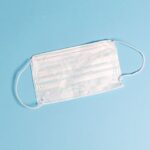Characteristics of Persistent Arthritis with Refractory Kawasaki Disease: A Single-center Retrospective Study
Introduction
Kawasaki Disease (KD) is an acute self-limiting vasculitis of unknown etiology that primarily affects children. It is characterized by fever, mucocutaneous manifestations, lymphadenopathy, and systemic inflammation. One of the complications of KD is arthritis, which occurs in 4.6-17.6% of patients. However, the clinical features and outcomes of arthritis in KD have not been well elucidated. The purpose of this study was to investigate the characteristics of persistent arthritis beyond the subacute phase of KD and evaluate the efficacy of diagnostic techniques such as musculoskeletal ultrasonography (MSUS) and biomarkers of joint damage, such as matrix metalloproteinase-3 (MMP-3).
Methods
This study was a single-center retrospective analysis of patients with KD treated at Yokohama City University Hospital between April 2008 and March 2019. The study included patients with or without arthritis, and those with early-onset or late-onset arthritis. Persistent arthritis was defined as arthritis that persisted to the subacute phase (after the 14th day of illness) or new-onset arthritis in the subacute phase. The demographic and clinical features of patients with KD and arthritis were analyzed, along with laboratory examinations, MSUS findings, treatment strategies, and outcomes.
Results
A total of 243 patients were included in the study, and 49 (20%) of them developed arthritis. Among those with arthritis, 33 (14%) had persistent arthritis beyond the subacute phase. The majority of patients with persistent arthritis had complete KD (94%) and were resistant to first-line treatment with intravenous immunoglobulin (IVIG) (91%). The most commonly affected joints were the knees, ankles, and hips, with large weight-bearing joints in the lower extremities being predominantly affected. Fever and arthralgia were reported by a significant number of patients. Laboratory examinations showed elevated levels of serum C-reactive protein (CRP) and MMP-3 in patients with active arthritis compared to remission. MSUS findings revealed joint fluid and positive power Doppler signals in periarticular soft tissue. The majority of patients were treated with non-steroidal anti-inflammatory drugs (NSAIDs) and prednisolone, and all patients achieved remission of arthritis within 3 months.
Discussion
The findings of this study highlight the characteristics of persistent arthritis in refractory KD. The high prevalence of persistent arthritis in patients with complete KD and IVIG resistance suggests that KD severity and susceptibility may be risk factors for persistent arthritis. The clinical features of persistent arthritis in KD, such as recurrent fever and elevated CRP levels, are distinct from those of other types of arthritis. The use of diagnostic techniques such as MSUS and biomarkers like MMP-3 can aid in the diagnosis of arthritis in KD. Treatment with NSAIDs and prednisolone has shown to be effective in achieving remission of arthritis in patients with refractory KD.
Editorial
Persistent arthritis in refractory KD is a topic of growing interest and concern in the medical community. While arthritis is a well-known complication of KD, its clinical features and treatment strategies have not been extensively studied. This retrospective study sheds light on the characteristics of persistent arthritis in KD and provides insights into its diagnosis and management.
One of the key findings of this study is the high prevalence of persistent arthritis in patients with complete KD and IVIG resistance. This suggests that the severity of KD and the inability to respond to initial treatment may contribute to the development of persistent arthritis. The identification of risk factors for persistent arthritis can help clinicians recognize patients who may require more aggressive treatment and monitoring.
The study also highlights the importance of diagnostic techniques such as MSUS and biomarkers like MMP-3 in the evaluation of arthritis in KD. MSUS allows for easy observation of joint fluid and periarticular soft tissue, providing valuable information about the extent of joint involvement. Serum MMP-3 levels, a biomarker of joint damage, were significantly elevated in patients with active arthritis compared to remission. The use of these diagnostic tools can aid in the timely diagnosis and appropriate management of arthritis in KD.
The treatment of persistent arthritis in refractory KD remains a challenge. The majority of patients in this study were treated with NSAIDs and prednisolone, and all patients achieved remission within 3 months. The response to glucocorticoids was rapid and highly satisfactory, highlighting their effectiveness in managing arthritis in KD. However, the optimal duration and dosage of glucocorticoid treatment in these patients remain uncertain.
Advice
Based on the findings of this study, clinicians should be vigilant about the development of persistent arthritis in patients with refractory KD. Early recognition and appropriate management of arthritis can help minimize its impact on patients’ activities of daily living and improve their quality of life. Diagnostic techniques such as MSUS and biomarkers like MMP-3 should be considered in the evaluation of arthritis in KD, as they can provide valuable information about disease activity and joint damage. Treatment strategies involving NSAIDs and glucocorticoids have shown to be effective in achieving remission of arthritis in refractory KD, but further research is needed to determine the optimal duration and dosage of these treatments.
Overall, this study contributes to our understanding of the characteristics and management of persistent arthritis in refractory KD. Continued research in this area is necessary to further advance our knowledge and improve outcomes for patients with this debilitating complication.

<< photo by Sami Abdullah >>
The image is for illustrative purposes only and does not depict the actual situation.
You might want to read !
- Victory in Sight: Rangers Dominate Motherwell in Score Updates
- The Battle on the Pitch: Live Updates from the Liverpool vs West Ham Clash
- The Cost of HS2: Grant Shapps Suggests Limitations Amid Northern Leg Debate
- How Jody Cundy’s Fiancée Played a Vital Role in His Journey on Strictly Come Dancing
- Crystal Palace vs Fulham: Premier League Clash Ends in Thrilling Showdown
- Battle of the Nations: England vs Scotland – TV Schedule and Coverage Details
- Reviving the Icon: Alpine Takes on the 911 with a Four-Seater Sports Car
- The Controversy Surrounding Suella Braverman’s Proposal to Ban XL Bully Dogs
- Exploring the Rugby World Cup 2023: A guide to the nine stadiums.
- “Coverage of South Africa vs Ireland Rugby Match: Channel, Start Time, and Viewing Options”
- Rugby World Cup Clash: South Africa vs Ireland – Kick-off Time, TV Channel, and More
- Revitalized Livingston Set to Challenge Celtic: Team News Revealed
- The Brighton vs Bournemouth Clash: Live Score Updates and Intense Rivalry
- “Game Day Delight: Catch the English Premier League clash between Brighton and Bournemouth with ease!”
- “The Thrilling Battle: Rangers vs Motherwell Unveils Scottish Football’s Intense Rivalry”




